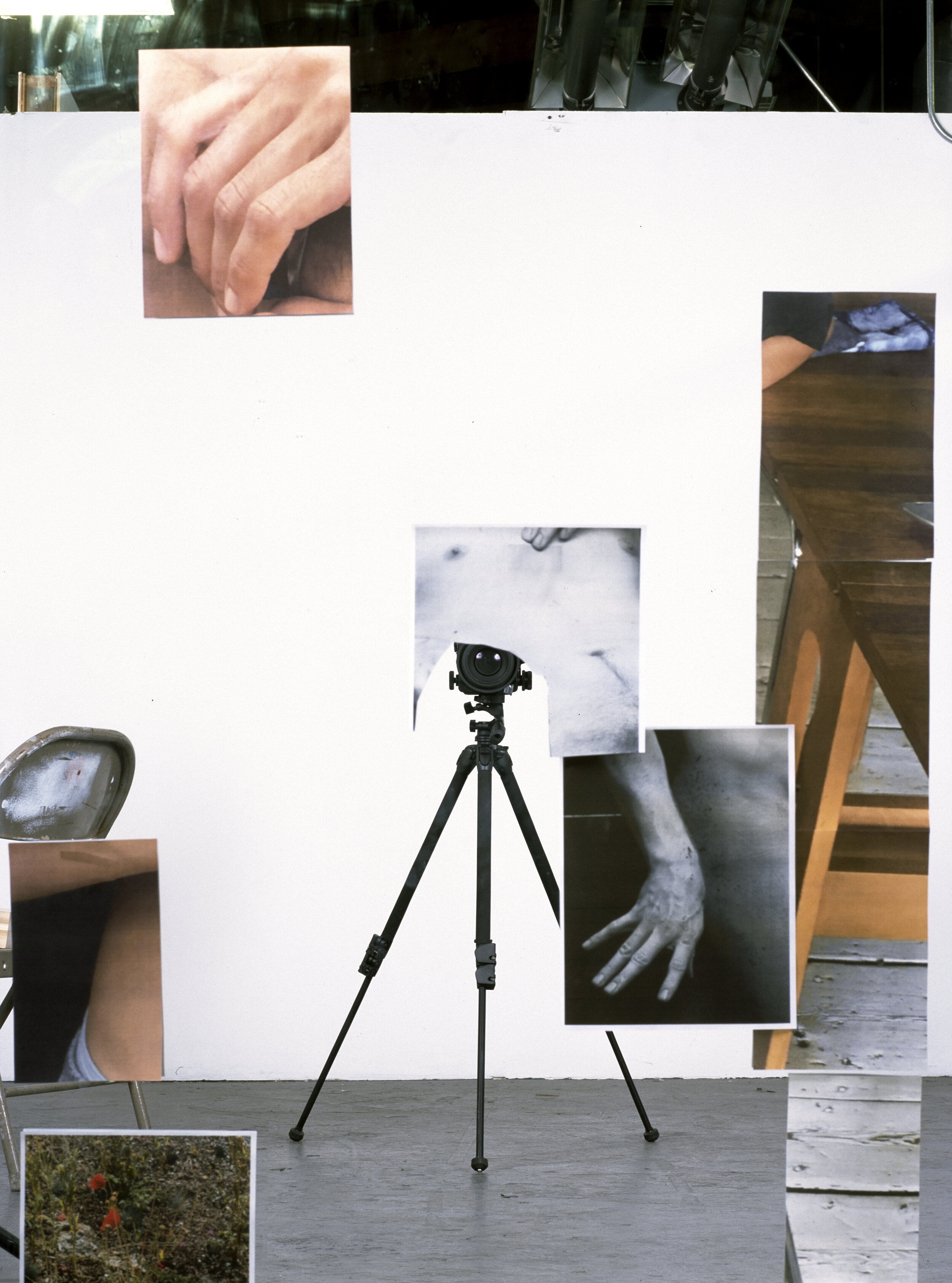from the archives
Excerpt from OSMOS Issue 12
PAUL MPAGI SEPUYA
By: Kenta Murakami
There is an erotic side to paper. Whenever we look at a beautiful print or magazine ad, we indulge in a kind of consumption. For queer people—or at least for myself—paper has also provided a surrogate for something that wasn’t always available or present. Through the representation and reproduction of flesh a more distanced kind of looking was permitted that felt safer. Reading men’s fashion magazines as a teenager was an act of both escapism and embodiment that I didn’t often otherwise allow.
Paul Mpagi Sepuya’s photographic work, which involves collaged prints, continually evolving artist books, and rephotographed images, basks brazenly in this eroticism. Men are photographed and the prints are cut out in his studio, layered on top of each other, creased, and peeled back. Sepuya often refuses to stay out of the frame as well, appearing as an arm or hand reaching in to arrange or simply touch part of the image —thus assuming the more centered role of the self-portraitist.
To start, he or his models often pose with a certain classicism, as if sitting for an art class; Sepuya then extracts details to be arranged with seeming disregard for any predetermined narrative. Moving freely between scales, minutiae are expanded into large abstractions that obscure the living figure in a way that reminds the viewer they’re looking at paper either way. The result is a titillating oscillation between the visual and the tactile.
The infinite reproducibility of a photo- graphic image adds fecundity to the print’s eroticism as well. With the studio as both the site and subject of this work, the image is permitted to be open-ended and processual. Using photography and collage to continually rework his prints into new syntaxes, Sepuya extracts from each iteration an overabundance of potential configurations and resulting gram- mars. The result is reminiscent of Jacques Derrida’s notion of grafting, whereby the cut can be generative rather than an act of violence.
Though repetition is often employed in photography as a means of establishing a firm ground to the mise-en-scène, in Sepuya’s series the mutability of the image destabilizes it. Despite the consistent format—a tripod facing a mirror—the simple reflection is disrupted, obfuscated, and complicated by the additional prints affixed to its surface. The coherent set up gives way to a mise-en-abîme of abounding images and worlds, the decisive moment abandoned for an indecisive mode of looking and touching. Despite the repetition of images, the only thing that comes into focus is the insatiability of Sepuya’s amorous gaze. While mechanical reproduction allows Sepuya to play out the endless erotics both his subjects and their images arouse, his work reveals the medium’s inability to create permanence when subject to the contingencies of looking and looking again.
Portrait Study 1, 2016
Self-portrait Study with Roses at Night (1709), 2015
Study for J. with Four Fingers (2203), 2015
Figure (_2010037), 2017
Figure (_2020896), 2017





